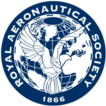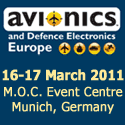Rerouting aircraft to avoid creating contrails, taxiing aircraft using hydrogen from waste products and a personal aircraft that anyone can fly - it could all happen in the future. Bill Read reports from the third day of the ICAS conference in Nice on the latest research into ways to reduce the effect of aircraft on the environment
Green issues are a hot topic of debate in the aerospace industry and a subject that ICAS conference has been covering in some depth..
A general session on Tuesday featured presentations from both Boeing and Airbus on what the respective aircraft manufacturers were doing to mitigate the effect of aircraft and air travel on the environment. Despite the presentations coming from two different companies, their answers were remarkably similar, covering not only the manufacturing and design processes but also looking at wider issues such as aircraft operations and recyling.
Today, three presentations looked at different aspects of ‘green’ aviation. The first, a study of US aircraft operations from NASA Ames and the University of California, looked at ways that aircraft could avoid the creation of potential environmentally hazardous contrails in the atmosphere by detecting and avoiding areas of super-saturated air. However, such route changes had to balanced against the increased fuel burn that would result from longer times in the air. Another presentation from MIT and Purdue University gave details of a study into the effect of aircraft operations on such environmental factors as fuel burn, climate, air quality and noise and what changes could be made in the short term to reduce their impact. Once again, it was concluded that a comprimise needed to be made between different goals.
A third presentation from the Politecnico di Torino in Italy considered the introduction of fleets of hydrogen-powered unmanned CHAT tow tractors at airports which could tow aircraft to and from runways to avoid the need to use fuel running engines on the ground (although one engine would still need to run to power the aircraft’s APU). According to a series of fascinating statistics from the study, the researchers have calculated that enough hydrogen could be produced from London’s waste to power CHATs at all five of its airports. An alternative idea was that airports could produce their own supplies of hydrogen on site, using photo-electric cells to synthesise water.
The ICAS foyer also includes a stand representing the new European Commission-funded Clean Skies research project which is looking at all aspects of aircraft and the environment, including design, engines, ATC, operations and rotorcraft.
And finally
One of the most interesting presentations of the day came from the Budapest University of Technology and Economics which proposes a radical new approach to general aviation with the introduction of the Personal Air Transportation System (PATS) This concept would involve the design of a completely new small aircraft which would be able to be flown by non-pilots. A PATS aircraft would be so easy to fly that it could be hired by families from new local inner city airports and flown like a car. Specialist systems would ensure that all the hard work was done by computers (the aircraft was compared to an ‘intelligent horse’ which could detect and avoid obstacles) and all the pilot had to do was drive. This concept will be be covered in more detailed in a future Aerospace International article.






